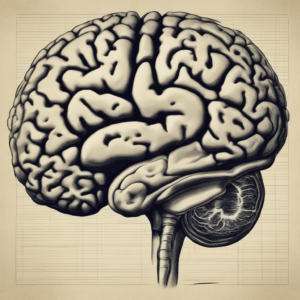Understanding Headaches: Types, Causes, and Effective Management
Introduction
Headaches are a common problem that nearly everyone has experienced at some point in their lives. Despite their prevalence, headaches can vary significantly in intensity, duration, and underlying causes. In this comprehensive guide, we will delve into the intricacies of headaches, exploring their various types, potential causes, and effective methods for managing and preventing them. Therefore, Understanding Headaches is a very important aspect of our day-to-day life.
Types of Headaches
Headaches can be broadly classified into two categories: primary and secondary. Primary headaches are not symptomatic of an underlying medical condition and include types such as tension headaches and migraines. Tension headaches often present as a dull, squeezing pain on both sides of the head. Migraines, on the other hand, are more intense and may involve pulsating, throbbing pain, accompanied by sensitivity to light and sound, nausea, and vomiting.
Secondary headaches, in contrast, are a result of an underlying disorder or condition, such as infections, injuries, or tumors. These headaches are essentially a side effect of the main illness. For instance, a person with a sinus infection might experience a secondary headache due to the inflammation and pressure in the sinuses.
Causes of Headaches
The exact causes of headaches are multifaceted and can involve a complex interplay of signals between the brain, blood vessels, and nearby nerves. While stress and tension are common triggers for headaches, other factors like dehydration, lack of sleep, hormonal changes, and certain foods can also contribute to their onset. Additionally, environmental factors such as bright lights, strong odors, and loud noises can act as stimuli that trigger headaches in susceptible individuals.
Understanding Migraines
Migraines are a particularly debilitating type of headache that often comes with a distinct set of symptoms. In addition to intense throbbing pain on one or both sides of the head, migraines can be accompanied by visual disturbances known as auras. These auras may manifest as flashing lights, zigzag lines, or temporary vision loss. Nausea, vomiting, and heightened sensitivity to light and sound are also common during a migraine attack.
Effective Headache Management
Managing headaches effectively requires a multifaceted approach that takes into account the type of headache and its underlying causes. For tension headaches, stress management techniques such as deep breathing, meditation, and regular physical activity can help alleviate symptoms. Over-the-counter pain relievers can be taken for temporary relief by doctor’s advice.
Migraine management often involves a combination of lifestyle changes and targeted medications. Identifying and avoiding migraine triggers, such as specific foods, bright lights, and loud noises, can be immensely helpful in preventing attacks. For those with chronic migraines, prescription medications such as triptans, beta-blockers, and anti-seizure drugs may be recommended by a healthcare professional.
Preventive Measures
Preventing headaches from occurring in the first place is a proactive approach that can significantly improve one’s quality of life. Staying hydrated, maintaining a consistent sleep schedule, managing stress through relaxation techniques, and adopting a balanced diet rich in nutrients can all contribute to headache prevention. Regular exercise not only helps reduce stress but also promotes healthy blood flow, which can be beneficial in preventing tension headaches.
When to Seek Medical Attention
While most headaches are typically harmless and can be managed with self-care strategies, there are certain instances where medical attention is warranted. If headaches are severe, frequent, or accompanied by neurological symptoms such as numbness, weakness, confusion, difficulty speaking, or changes in vision, it’s crucial to consult a medical professional. Additionally, sudden and extremely severe headaches, often described as “thunderclap” headaches, should be evaluated promptly, as they could indicate a serious underlying condition such as a ruptured blood vessel in the brain.
Conclusion
In conclusion, headaches are a prevalent condition that can vary in intensity, causes, and types. Understanding the differences between primary and secondary headaches, as well as the symptoms of specific types like tension headaches and migraines, is essential for effective management. By adopting healthy lifestyle habits, identifying and avoiding triggers, and seeking medical attention when necessary, individuals can significantly reduce the impact of headaches on their daily lives. Remember, each person’s experience with headaches is unique, and finding the right combination of strategies for prevention and management is key to achieving optimal well-being.
Related Queries.
- Primary vs. secondary headaches
- Types of primary headaches
- Understanding tension headaches
- Managing migraines effectively
- Preventing headaches through lifestyle changes
- When to seek medical attention for headaches






